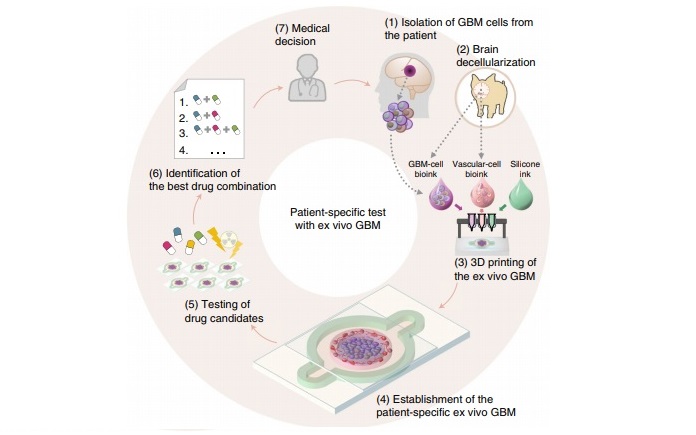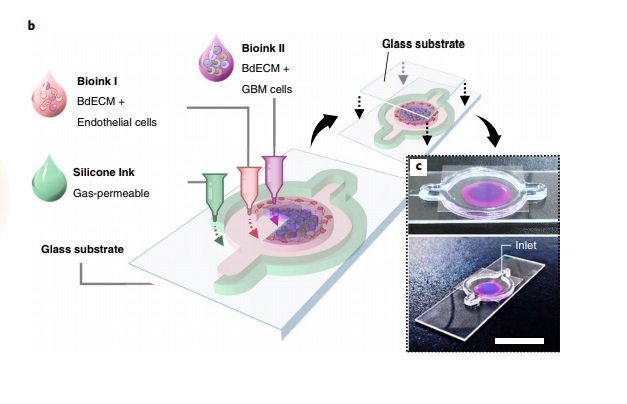South Korean scientists are working to improve cancer treatments with 3D bioprinting.
Professor Sun Ha Paek, Chairman in the Department of Neurosurgery at Seoul National University Hospital (SNUH), and Professor Dong-Woo Cho of the Pohang University of Science and Technology (POSTECH) have 3D bioprinted glioblastoma-on-a-chip devices to understand the behavior of cancer cells.
Glioblastoma, also known as glioblastoma multiforme (GBM), is an aggressive form of cancer found in the brain or spinal cord. In a study published in Nature Biomedical Engineering, the scientists detail how extracted GBM cells from cancer patients in an ex vivo model can emulate the characteristics of GBM human tumors. Professor Paek explained:
“[THIS] SYSTEM CONFIRMS THAT CELL-PRINTING TECHNOLOGY COULD BE USED TO FIND A CUSTOMIZED ANTICANCER COMBINATION FOR EACH PATIENT IN THE FUTURE TREATMENT OF BRAIN CANCER.”
3D bioprinting cancer cells
GBM is the most common form of brain cancer, accounting for approximately 50% of all malignant primary brain tumors, and is considered to be highly refractory (resistant) to chemoradiotherapy, according to the research.
A team of bioengineers, led by Professor Paek and Professor Cho sought to combat the ineffectiveness of such treatments by observing the isolated cancer cells from patients who had improved and deteriorating symptoms through chemotherapy.
Bioink consisting of GBM and human vascular cells were printed sequentially to create a concentric ring structure on a chip which was also 3D printed from oxygen-permeable silicone. Using this chip the structural, biochemical and biophysical properties of the GBM tumors could be replicated.

The oral chemotherapy drug temozolomide was used to create a reaction in the cells similar to the clinical outcomes of chemotherapy. The research states that the “glioblastoma-on-a-chip reproduces clinically observed patient-specific resistances to treatment with chemoradiation.
“The model can be used to determine drug combinations associated with superior tumor killing for glioblastoma patients resistant to standard first-line treatment.”
“A bioprinted human-glioblastoma-on-a-chip for the identification of patient-specific responses to chemoradiotherapy” is co-authored by Hee-Gyeong Yi , Young Hun Jeong, Yona Kim, Yeong-Jin Choi, Hyo Eun Moon, Sung Hye Park, Kyung Shin Kang, Mihyeon Bae, Jinah Jang, Hyewon Youn, Sun Ha Paek , and Dong-Woo Cho.
Similarly, Shalini Guleria, Masters student at the University of Waikato, New Zealand, is 3D printing breast tumor cells to identify the best treatment for cancer patients. Last year, Guleria created a prototype tumor model using FFF 3D printing and is following this design in the development of an ex vivo bioprinted model.

Source: 3dprintingindustry


